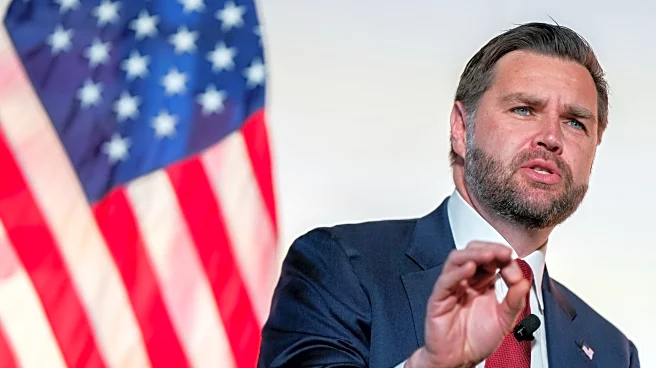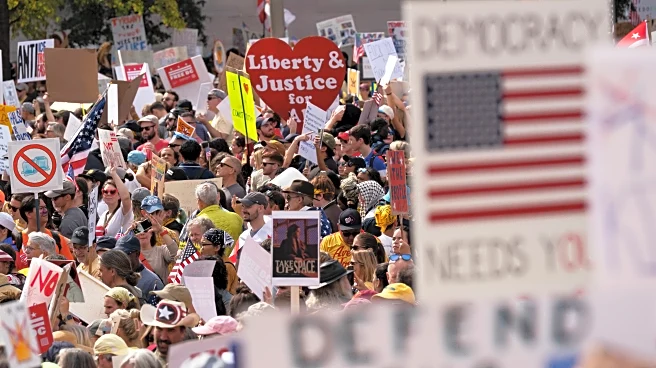What's Happening?
President Donald Trump is encountering difficulties similar to those faced by his predecessor, Joe Biden, regarding consumer prices. Despite a decrease in inflation to around 3% annually, prices for goods,
particularly those affected by Trump's tariffs, remain high. This situation has led to dissatisfaction among Americans, impacting Trump's approval ratings. The administration has rolled back tariffs on hundreds of food items, including coffee and bananas, and is considering sending tariff-funded checks to lower- and middle-income households. Trump is also focusing on corporate investments to boost jobs and wages, although these strategies take time to show results.
Why It's Important?
The persistence of high consumer prices despite lower inflation rates is a significant concern for the U.S. economy. It affects consumer sentiment and purchasing power, which are crucial for economic growth. Trump's tariffs, while generating federal revenue, have contributed to higher prices for imported goods, impacting household budgets. The administration's efforts to stimulate the economy through corporate investments and tariff adjustments are critical as they aim to balance economic growth with consumer satisfaction. The upcoming midterm elections could be influenced by these economic challenges, as public sentiment plays a crucial role in political outcomes.
What's Next?
President Trump plans to visit battleground states to promote tax cuts and deregulation, aiming to enhance Americans' buying power. The administration is also expected to announce measures to lower healthcare costs, another area of concern for consumers. Trump's focus on corporate investments in artificial intelligence and manufacturing could lead to job creation, although these initiatives require time to materialize. The administration's economic policies will be closely watched as they attempt to address high consumer prices and maintain public support ahead of the 2026 midterm elections.














